Estimated reading time: 9 minutes
When planting a homestead garden, you want a growing space that results in high yields, saves water and time, and is space-efficient. You may ask yourself, is that even possible? Using the concept of companion planting, you can easily grow more plants in a small space, reduce weed and pest pressure, and harvest all the delicious food you need.
Companion planting centers on the idea that certain crops have a symb iotic relationship, like carrots and tomatoes or beans and corn. Some crops relieve pest pressure or decrease weeds, while others provide trellis support or shade.
Whether you are just getting started in the garden or have been growing for years, it is easy to incorporate companion planting into your homestead.
Want to save this post for later? Click Here to Pin It On Pinterest!
How It Works
Certain plants just work better together. While some of this has to do with the chemical makeup of particular veggies, other combinations make sense from a spatial point of view.
For example, many gardeners like to grow corn, beans, and squash in the same row. This combination is often referred to as the Three Sisters, as it is a common Native American practice to grow corn, beans, and squash together.
This model of companion planting is successful because each crop helps the other one out. The corn grows tall, providing a trellis for the beans. Squash tends to grow everywhere, providing shade for the beans and retaining soil moisture for the corn.
Altogether, the three plants work in harmony. When planted in the same row, gardeners can use these companions to maximize garden space while reducing weed pressure and saving water.
Benefits of Companion Planting
There are several benefits of companion planting. These include pest control, plant growth support, water conservation, nitrogen fixation, and fewer pesticides. For these reasons, many gardeners who practice companion planting also engage in organic growing practices.
If you grow plant companions that fight off pests and support beneficial insects, you decrease the need for synthetic chemicals and fertilizers. Whether you use agricultural machinery to harvest or prefer to do it by hand, companion planting is beneficial for any farm.
You want to take as many preventative measures as possible to manage pests in your garden homestead. There are numerous ways to prevent pests and diseases without using chemicals, especially if you are growing organically. To do this, you want to focus on supporting beneficial insects and creating biodiversity.
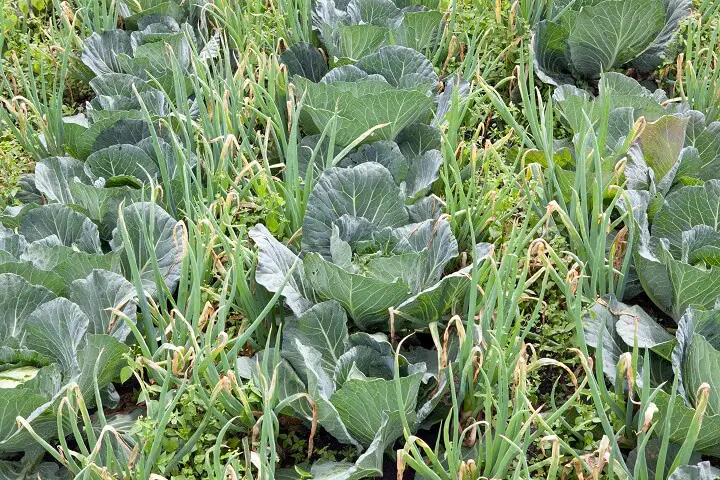
Natural ecosystems work by creating a balance between plants, known as polyculture. Interplanting different species decreases the chance that a particular pest will find a home in your tomato beds, especially if there are plants around it that deter insects like tomato hornworms.
Interplanting different crops in your garden also helps conserve water and fix nitrogen, which has huge advantages for your growing success. Whether or not you use irrigation, conserving water is always beneficial for your garden. Companion planting, especially between tall and short crops, increases soil moisture, reducing the need for constant watering.
Additionally, all plants require certain nutrients to thrive. Nitrogen is a key fertilizer, but too often, it is lost to the atmosphere when soil is disturbed. Interplanting nitrogen-fixing plants, like beans, is a great way to return nitrogen to the ground.
Whether you have a couple of raised beds or a half-acre garden, reducing the time you spend picking weeds is a win. Companion planting can significantly reduce weed pressure through a process referred to as nurse cropping. Nurse cropping is a method of planting tall or canopied plants that either provide shade, trellising, or a windbreak for plants closer to the ground.
This technique enables you to protect slower-growing plants like carrots by planting fast-growing plants such as squash or sunflowers. Grown in combination with shorter crops, the taller plants take up space where weeds could grow and provide shelter for the accompanying plants to thrive.
Common Plant Companions
Now that we've identified a few benefits of companion planting, let's explore some common plant companions to utilize in your garden. When you are growing fruits and vegetables on your homestead, you have several easy ways to introduce companion planting to increase crop yield. Here are some of the best plant companions to try.
Asparagus
Asparagus can be an incredibly rewarding crop, but it requires patience. Asparagus is a perennial vegetable, and it takes about three years before you can harvest the first crop. The good news is that once asparagus roots are established, the plants can keep producing for decades.
When planting asparagus, consider crops like tomatoes, basil, dill, and marigolds. Tomatoes contain solanine, which repels asparagus beetles. Asparagus fights nematodes, a type of pest that lives in the soil and is infamous for damaging tomatoes. Dill and basil are great at deterring pests and attracting beneficial insects, and marigolds are also excellent insect-repellers.
Green Beans
Green beans, as well as other pole and bush beans, are best combined with corn. Corn acts as a trellis, so you don't need to build one. Beans are a nitrogen-fixer and can easily be paired with many other common garden vegetables, including broccoli, peas, potatoes, and cabbage.
However, there are a couple of plants that aren't beneficial to green beans. If you have an onion crop, you may want to plant it on the other side of the garden, as alliums inhibit bean growth.
Beets
Beets can be a fantastic homesteading crop, especially if you are looking to grow root vegetables to store for longer periods. Beets are best grown in the spring or fall since they tend to bolt if it gets too hot or dry. Depending on soil and weather conditions, beets can take a longer time to grow, especially compared to crops like summer squash and greens.
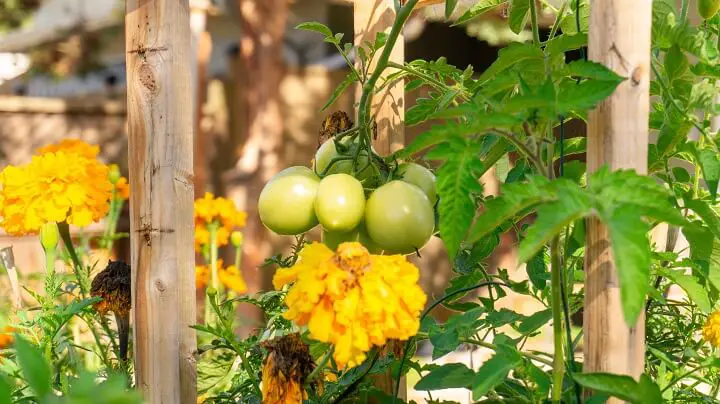
You can easily grow beets with other root vegetables, like carrots or turnips. You can also use lettuce as a cover crop to reduce weed pressure. Other types of greens also work well with beets, providing a quick harvest in a bed that will most likely have beets for most of the growing season.
Beets are actually in the same family as Swiss Chard, and the two crops love to grow together. When grown together, the two plants cross-pollinate each other. Just make sure you can tell the difference between the leaves since they can look very similar.
Cabbage
If you have ever grown cabbage before, you know this vegetable is so much tastier than anything you can find in the grocery store. There are many types of cabbage to choose from, including green, red, and Napa. However, several types of pests love cabbage, so this vegetable can be tricky to grow organically.
Luckily, cabbage is popular amongst other veggies and easily works with most of them. Try planting it with beets, cucumbers, garlic, kale, onions, potatoes, or spinach. Aromatic herbs like rosemary and peppermint also grow well with cabbage and are great pest deterrents.
Potatoes
As a homesteader, growing potatoes is almost a requirement. They are nutritious, full of fiber, and long-lasting in the winter when access to fresh produce is limited. However, they require a little extra space and love to succeed. Potatoes have a long growing season and need adequate water and heat to grow.
Because they are larger root vegetables, you will want to “hill” the soil in a bed before planting them, so the roots have room to go down. Because of this, it is best to plant companions that grow above the soil. Lettuce, radishes, and scallions are great options to plant with potato plants.
These companion plants can reduce weed pressure, especially considering that potato beds will be around for a couple of months, and they can be harvested well before you disturb the soil to dig up potatoes.
However, avoid planting anything in the nightshade family, like tomatoes or eggplant. Potatoes are also in this family, and planting tomatoes in the same row can lead to increased pest and disease pressure.
Zucchini
While you may get tired of it in just a couple of weeks, few plants are quite as prolific as zucchini. Zucchini and other summer squash varieties tend to require extra space in the garden. These plants like to spread everywhere and need a lot of water.
Earlier, we mentioned the Three Sisters, including corn, beans, and squash — other plants like zucchini work well too. Nasturtiums manage pest pressure from aphids and flea beetles and look beautiful around the edge of your garden rows. Aromatic herbs like oregano and lemon balm are also great insect repellers.
| Plant | Companion Plants |
| Asparagus | Tomatoes, basil, dill, and marigolds |
| Beets | Other root vegetables (like carrots or turnips), Swiss Chard, and other greens |
| Cabbage | Beets, cucumbers, garlic, kale, onions, potatoes, and spinach |
| Green Beans | Corn, broccoli, peas, potatoes, and cabbage |
| Potatoes | Lettuce, radishes, and scallions |
| Zucchini | Corn, beans, and spinach |
Your Companion Planting Plan
Like with any garden, you will want to map out your companion planting plan before getting started. Using the resources above, consider adding some marigolds to your asparagus bed, or put a couple of rosemary plants near the cabbage patch.
Planning where everything will go only increases the success of companion planting. Keep in mind that some crops require a longer season, like potatoes, while others like lettuce grow fairly quickly.
There are many benefits to companion planting, and you don't need to be an advanced gardener to enjoy them. Companion planting reduces pest pressure, saves water, increases crop yields, and manages soil health without synthetic chemicals or fertilizers.
By simply using nature as a guide, you can improve your garden's health by planting certain vegetables together, making your land work for you. Enjoy this guide to companion planting, and good luck!
Like this post? Don't Forget to Pin It On Pinterest!
Author Bio: Emily has been working on gradually going off the grid through making her own cleaning supplies, developing her garden, and decreasing her energy usage. You can read more of her work on her blog, Conservation Folks.
Like this post? Don't Forget to Pin It On Pinterest!

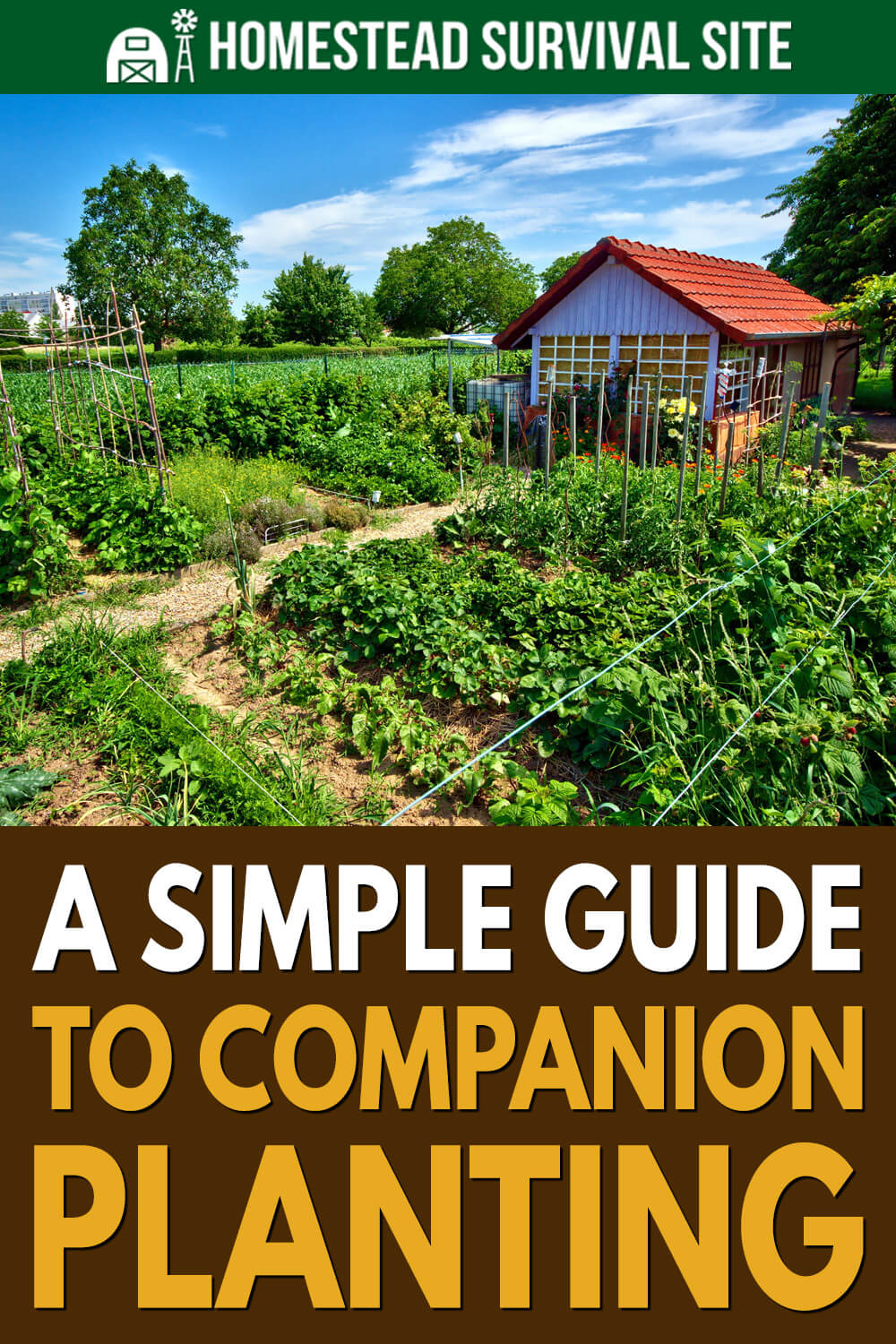




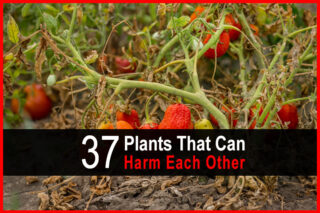
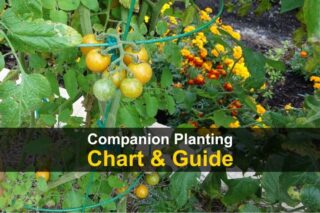
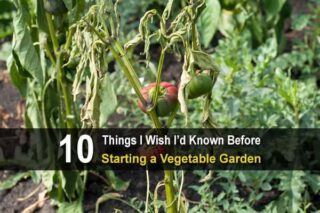

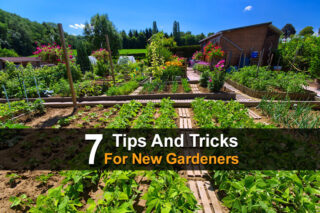
Nasturtiums do not deter flea beetles. The flea beetles ATE all my nasturtiums this year!